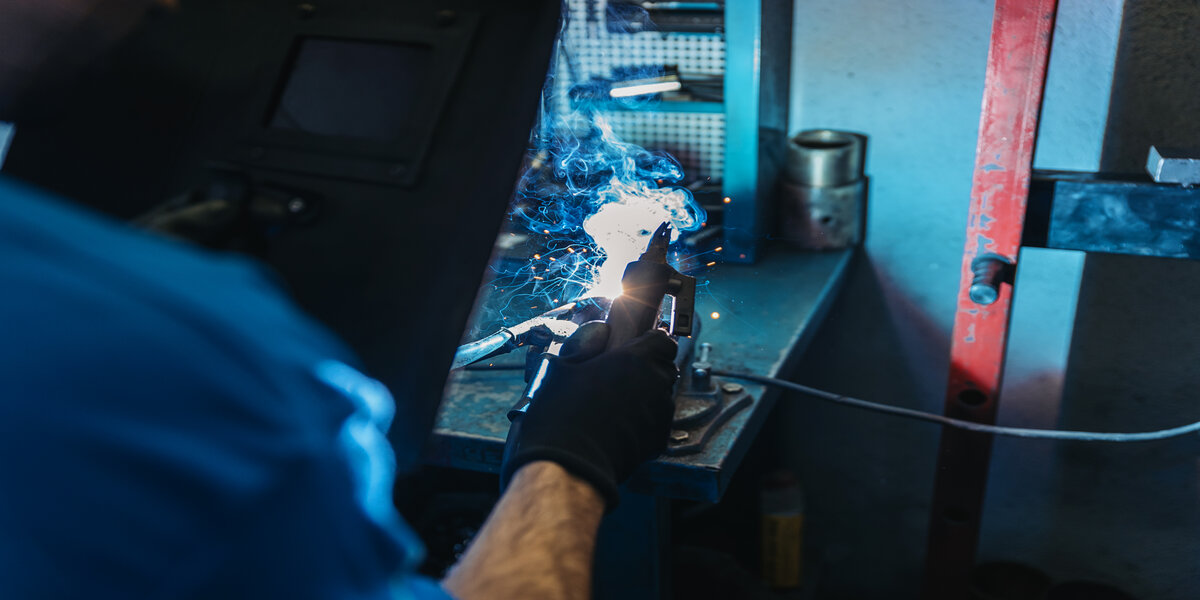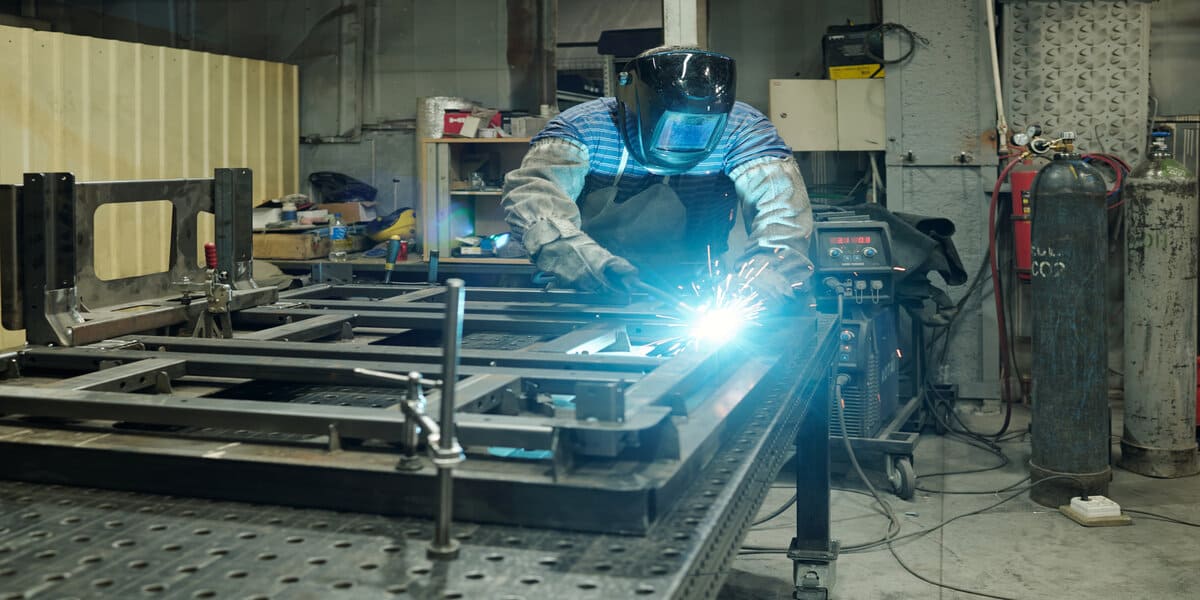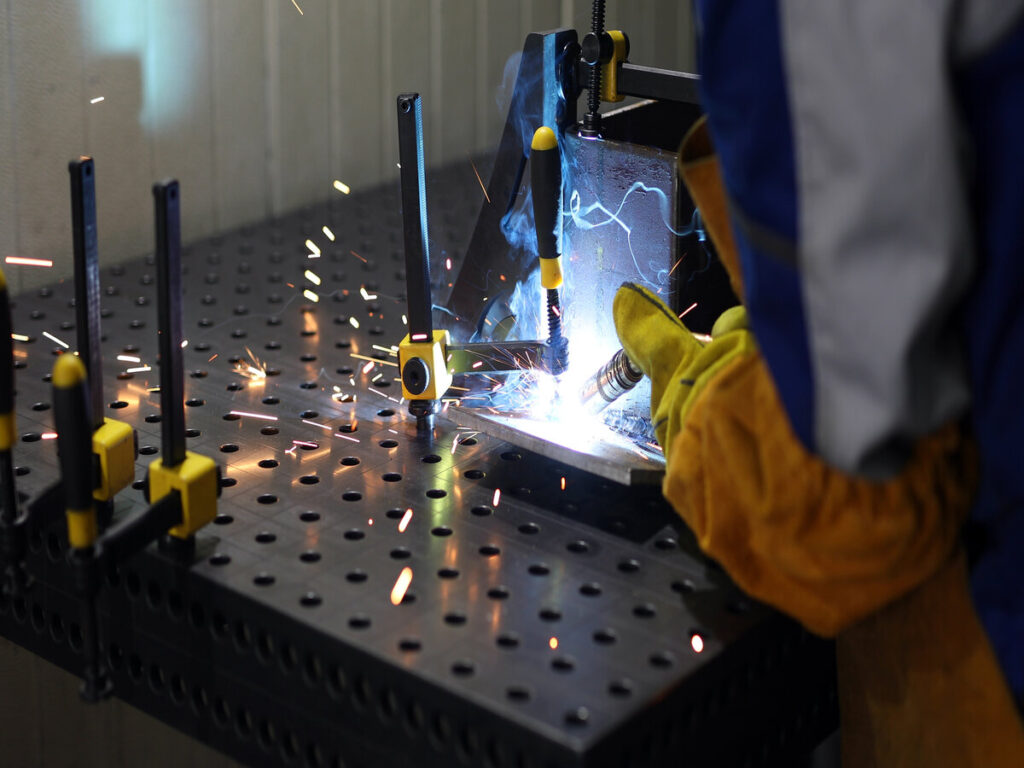Quality control is very important in any welding operation. It involves a series of processes and procedures that are put in place to ensure that the final product meets the required standards and specifications. Quality-controlled welding station is necessary as it helps identify defects, inconsistencies, and other issues that may arise during welding. By implementing quality control measures, companies can improve their welding operations’ overall efficiency and reliability, resulting in higher-quality products and increased customer satisfaction.
Maintaining a controlled welding station is a big part of quality control in welding operations. A controlled welding station is a designated area or space where all the necessary equipment, tools, and materials are kept for the welding process. This ensures that the welding process is carried out standardized and consistently, reducing the chances of errors and defects. By maintaining a controlled welding station, companies can ensure that all welding procedures are conducted in a controlled environment, leading to better quality control outcomes.
Essential Equipment for Quality-Controlled Welding Station
1. Welding Machines and Power Sources
Types of welding machines suitable for quality welding
Various types of welding machines are available in the market, each with unique features and capabilities. However, when it comes to quality-controlled welding stations, a few types of welding machines stand out. These include Stick Welders, MIG Welders, TIG Welders, and Plasma Arc Cutters.
Importance of regular maintenance and calibration of machines
Regular maintenance and calibration of welding machines are necessary to ensure consistent and accurate results in the welding process. Over time, wear and tear can affect the performance of welding machines, leading to potential defects or errors in the final product. By conducting regular maintenance checks, companies can identify any issues early on and address them before they impact the quality of their welds. Calibration also plays a major role in maintaining a quality-controlled welding station. It involves adjusting and aligning the machine’s settings to ensure accurate and precise welds.

2. Quality Welding Consumables
Types of welding consumables
Welding consumables are materials used during the welding process, such as electrodes, filler metals, and shielding gases. Using high-quality consumables is important for achieving quality welds. Some common types of welding consumables include:
- Electrodes: These conductive rods or wires are used to carry electric current during the welding process.
- Filler Metals: These materials are melted to fill gaps between metals and create stronger bonds. They can come in the form of wires, rods, or powders.
- Shielding Gases: These gases protect the weld from atmospheric contamination during welding. Common shielding gases include carbon dioxide, argon, and helium.
Importance of selecting appropriate consumables
Using the appropriate welding consumables is needed to achieve high-quality welds. The type and quality of consumables used can greatly impact a weld’s overall strength, appearance, and integrity. For example, using low-quality filler metals can result in weaker and less durable welds more prone to defects. By carefully selecting and using quality consumables, companies can ensure that their welding process meets the required standards and produces consistent, high-quality welds.
3. Welding Tools and Accessories
Types of important welding tools and accessories
In addition to welding machines and consumables, several other essential tools and accessories are necessary for maintaining a quality-controlled welding station. Some of these include:
- Safety Equipment: Safety should always be a top priority in welding operations. Some must-have safety equipment includes welding helmets, gloves, and protective clothing to protect against heat, radiation, and flying debris.
- Welding Clamps: These hold the metal pieces in place during welding, ensuring precise and accurate welds.
- Wire Brushes and Grinders: These tools are used for cleaning and preparing metal surfaces before welding, ensuring better weld adhesion.
- Measuring Tools: Accurate measurements are important in welding to ensure proper alignment and fit of metal pieces. Some common measuring tools used in welding include calipers, rulers, and squares.
Importance of having the right tools for quality welds
Having the tools and accessories readily available in a controlled welding station can help reduce errors and inconsistencies in the welding process. This can lead to improved efficiency, lower rejection rates, and higher-quality products for customers.
Quality Control Measures for Welding Operations
1. Welding Procedure Specifications (WPS)
Welding Procedure Specifications (WPS) are detailed instructions outlining the steps and parameters for a specific welding process. These specifications provide guidelines for welders to follow and ensure consistency and quality in their work. WPS is essential in maintaining standardization and removing variations in the welding process, leading to more reliable and higher-quality welds.
A well-written WPS should include elements such as the welding process, type of materials being welded, joint design, filler metal composition, preheat and post-welding heat treatment requirements, and welding parameters like voltage, amperage, travel speed, and interpass temperature. It should also outline any special precautions or techniques needed for successful welds. By including all these details in a WPS, companies can ensure that their welding processes are consistent and meet the required quality standards.
2. Pre-Weld Inspection
Done before any welding takes place, a pre-weld inspection involves checking the base metal and welding materials for any defects or contaminants that could affect the quality of the weld. Pre-weld inspection also ensures all necessary equipment and tools work well before welding.
The pre-weld inspection should also visually examine the joint to ensure proper fit-up and alignment. Any gaps or misalignments should be addressed before starting the weld to prevent potential defects. By conducting a thorough pre-weld inspection, companies can identify any issues that may affect the quality of their welds and address them before they become bigger problems. This can ultimately lead to more consistent and high-quality welds.
3. In-Process Inspection
In-process inspections during the welding process ensure that the weld quality is maintained. Some common methods for inspecting welds during welding include visual inspection and non-destructive testing (NDT). Visual inspection involves examining the weld for defects or imperfections, such as cracks, porosity, or incomplete fusion. On the other hand, NDT techniques use specialized equipment to detect internal defects in the weld without damaging it. These methods include ultrasonic testing, radiography, and magnetic particle testing.
In-process inspections help in identifying and correcting any issues early in welding. By conducting regular visual inspections and performing NDT when necessary, companies can catch potential defects or imperfections before they become more serious problems. This can help maintain the quality of welds and save time, effort, and resources in the long run. In-process inspections are also necessary for ensuring that all welding parameters and procedures specified in the WPS are being followed correctly, leading to consistent and high-quality welds.
4. Post-Weld Inspection
Post-weld inspections are done after welding is complete to verify the quality of the finished weld. These inspections help ensure that the welded joint meets all required standards and specifications. Some common types of post-weld inspections include visual inspection, dimensional inspection, and non-destructive testing (NDT).
Visual inspection involves examining the completed weld for visible defects or imperfections, such as cracks, porosity, or incomplete fusion. Dimensional inspection involves measuring the size and shape of the weld to ensure it meets the required dimensions and tolerances. Finally, NDT techniques can also be used in post-weld inspections to detect any internal defects that may not be visible to the naked eye.

Proper Storage and Handling of Welded Products
After welding, ensure proper storage and handling of the welded products. This includes protecting them from damage during transportation, storing them in a controlled environment, and avoiding any potential hazards that could affect the quality of the welds. Proper storage and handling can help maintain the integrity of the welded products and prevent any defects or flaws from developing over time.
One important aspect of proper storage and handling is protecting the welds from environmental factors such as moisture, heat, or corrosion. This can be achieved by storing the products in a clean, dry area and using protective coverings or coatings when necessary. Welded products should also be handled with care to avoid any mechanical damage that could compromise the quality of the welds. By following these measures, companies can ensure that their welded products remain in top condition and meet the required quality standards for their customers.
Maintaining a Safe and Clean Welding Area
Maintaining a safe and clean welding area ensures the quality and safety of the welding process. A clean environment helps prevent potential hazards, such as combustible materials or debris, from interfering with the welding process and causing defects in the welds. Regularly cleaning the welding area also helps keep equipment in good condition and prevents contamination of welds. It is important to dispose of waste materials properly and have designated areas for storing welding equipment and supplies. Keeping the welding area from clutter can also improve productivity by reducing unnecessary movement and distractions.
Ensuring a safe workplace also prevents accidents and injuries during welding. This includes following proper safety protocols such as wearing personal protective equipment (PPE), implementing safety procedures, and properly maintaining equipment. Companies should also train their employees on safe welding practices and handling emergencies. By maintaining a safe and clean welding area, companies can create a conducive working environment for their welders, leading to efficient and high-quality work.
In conclusion, proper inspection techniques, storage and handling measures, and maintaining a safe and clean welding area are necessary for achieving high-quality welds. Companies can identify potential issues early on by conducting thorough pre- and regular in-process and post-weld inspections and addressing them before they become major problems. Proper storage and handling of welded products also ensure their longevity and quality.

Frequently Asked Questions
What are some common methods for inspecting welds during welding?
Some common methods include visual inspection and non-destructive testing (NDT), such as ultrasonic testing, radiography, and magnetic particle testing.
Why is it important to conduct in-process inspections during welding?
In-process inspections help identify and correct potential issues early on, ensuring the quality and consistency of welds and saving time, effort, and resources in the long run.
What types of inspections should be performed after welding is complete?
Post-weld inspections typically include visual, dimensional, and non-destructive testing to ensure the quality of the finished weld meets all required standards and specifications.
How can companies ensure proper storage and handling of welded products?
Companies should protect the welds from environmental factors, such as moisture and corrosion, by storing products in a controlled environment and handling them carefully to avoid mechanical damage.
Why is maintaining a safe and clean welding area important?
A: A clean environment helps prevent hazards that could affect the quality of welds, and a safe workplace helps prevent accidents and injuries, creating a conducive working environment for welders.
References
- Handling and Storage of Welding Fluxes – ESAB
- Be Prepared: Five Potential Welding Safety Hazards to Avoid
- What is Welding Inspection? – A Definitive Guide

